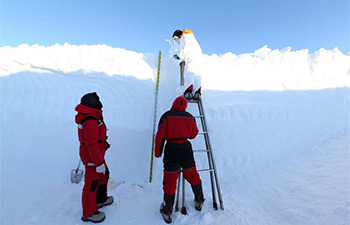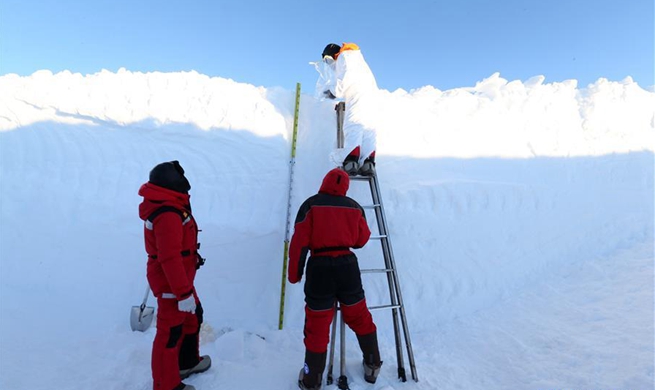SAN FRANCISCO, Dec. 20 (Xinhua) -- Scientists from U.S. Stanford University can easily locate almost every solar panel installed across the United States by resorting to a deep-learning-powered tool that sorts more than 1 billion satellite images, a new study shows.
The Stanford scientists worked out a deep learning system called DeepSolar, which mapped about 1.7 million visible solar panels by analyzing more than 1 billion high-resolution satellite images with a machine learning algorithm and identified nearly every solar power installation in the contiguous 48 states.
The research team trained the machine learning DeepSolar program to find solar panel installations, whether they are large solar farms or individual rooftop facilities, by providing it with about 370,000 images, each covering about 100 feet (about 30.4 meters) by 100 feet.
DeepSolar learned to identify features of the solar panels such as color, texture and size without being taught by humans.
By using this new approach, the researchers were able to analyze the billion satellite images to find solar installations -- a workload that would have taken existing technology years to complete, but was done within one month with the help of DeepSolar.
"We can use recent advances in machine learning to know where all these assets are, which has been a huge question, and generate insights about where the grid is going and how we can help get it to a more beneficial place," said Ram Rajagopal, associate professor of civil and environmental engineering at Stanford.
The results of the research, which was published Wednesday in the science journal Joule, can help governments decide on renewable energy strategies, track the distribution of install solar panels or plan for optimal economic development in a given community.
"We are making this public so that others find solar deployment patterns, and build economic and behavioral models," said Arun Majumdar, a professor of mechanical engineering at Stanford who is also a co-supervisor of the project.

















